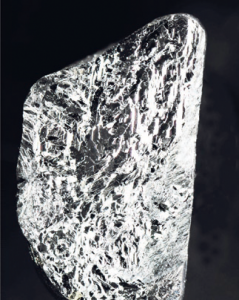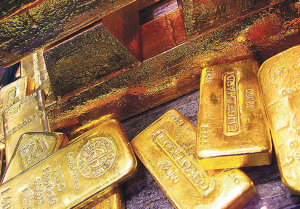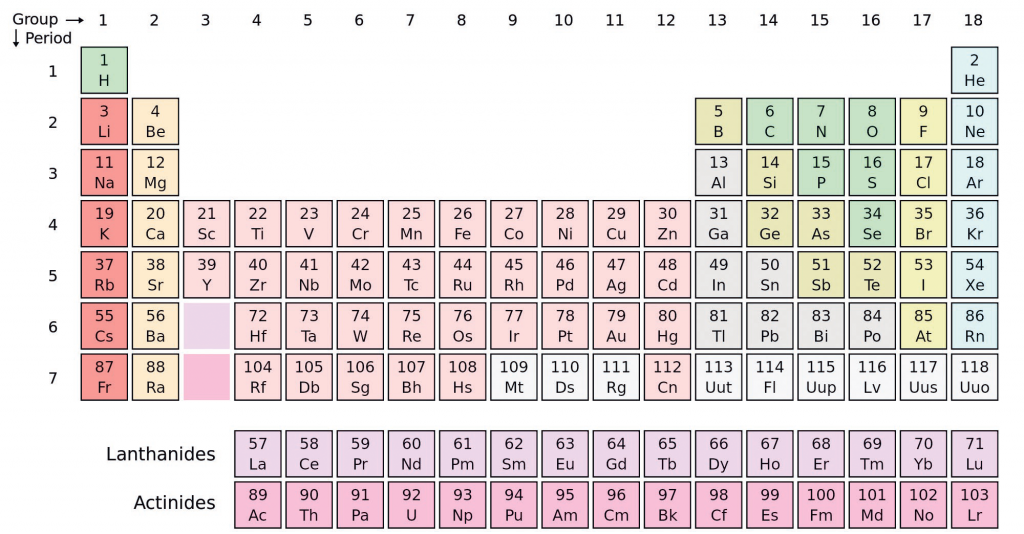FRIDAY, 25 JANUARY 2013
Chemistry and language don’t always mix well. Take for example, trying to identify chemicals through a confusing mix of common names and so-called ‘scientific’ names. When you’re trying to make a good cake, would you prefer some baking soda, also known as sodium bicarbonate, or some bicarbonate of soda, also known as sodium hydrogen carbonate? They are quite different compounds, and can have a very different impact on upon the success of your cooking.This is not to say that naming is irrelevant to chemists. In fact there is an entire organisation, the International Union of Pure and Applied Chemistry (IUPAC) that is in charge of developing standard practices within all aspects of the field, from chemical names to the formats of chemical publications. Despite their very broad remit, most members of the public (and even chemists) are only likely to hear about the IUPAC for one reason—the naming of new elements.
The names of many elements were known and accepted long before the IUPAC was officially founded in 1918. The etymology of these names varies wildly, due to the correspondingly varied circumstances in which they were first isolated or recognised by scientists. The oldest name for an element is believed to be gold, which is thought to have been derived from the Proto-Indo-European word ghel, meaning yellow or bright. The language has been conservatively estimated to have been spoken five thousand years ago.
Certainly, not all elements were as easy to identifyas gold. As scientific techniques and theories developed so too did the understanding of what elements actually were. This led to a clearer need to give each a unique name to identify them and as we have slowly filled in more and more of the gaps of the periodic table left by Dmitri Mendeleev, so have the varied stories behind each of these names grown.
While the connection between lead’s chemical symbol Pb, and plumbing (both being derived from the original Latin ‘plumbum’) can be easily deduced, many entries hold far more interesting stories. Take antimony for example, with symbol Sb. It was known to the Ancient Egyptians as an important ingredient in kohl, an ancient version of eye cosmetics. They were even able to distinguish between the native metallic form and the sulphide, and called the former msdmt (in hieroglyphs) which became sdm and then stimmi after it was adopted into Greek. This in turn evolved into the Latin stibium, which was used as the basis for its symbol after its adoption by the Swedish chemist Jons Jakob Berzelius in his writings in 1813 and 1814.
The origins of the actual name antimony are a little more muddled. Even though the name can be traced back to Medieval Latin, where it was known as antimonium, the origins of this word are unclear, with two main competing theories offering radically different explanations. The first theory derives from the name’s similarity to the French word antimoine, literally meaning ‘monk-killer’. Considering that many early alchemists were monks, and antimony is poisonous, this sounds like a likely source. But an equally convincing explanation comes from the Greek construction ‘antimonos’, meaning ‘never alone’. This refers to the fact that natural antimony deposits never occur by themselves, and are instead always found mixed in with other ores. Neither theory has been conclusively accepted, and remains an ambiguity present in the periodic table to this day.
More recent controversies have derived from the convention mentioned earlier that the discoverers of an element should have the right to name it. This system becomes problematic when the discovery of an element is contested, either because another scientist believes they discovered it first, or because the original observation is believed to be incorrect. In the 18th and 19th centuries the latter was more common, when modern characterisation techniques were yet to become available, and errors were often made in determining whether new compounds were in fact new elements or simply new forms of existing elements.
This is best exemplified in the controversy surrounding the discovery of niobium and tantalum, the former of which was first reported to the Royal Society in 1801 by Charles Hatchett. He suggested the name ‘columbium’, as he had discovered the element in some samples given to the British Museum from Massachusetts and wanted to acknowledge this source in his choice of name. The very next year, in 1802, Swedish chemist Anders Gustaf Ekeberg reported that he had also discovered a new element with very similar properties to Hatchett’s columbium, which he named ‘tantalum’ in reference to the mythical King Tantalus, whose torture – consisting of standing in pool of water which would constantly recede when he stooped to drink it –was deemed comparable to the great difficulty Ekeberg found in trying to dissolve tantalum in water. It was subsequently thought that both claims referred to the same element, and it wasn’t until 1848 that the matter was settled. The German mineralogist and chemist Heinrich Rose tested a sample of Hatchett’s columbite, and found it contained two distinct elements, the first of which was tantalum, and the second he called niobium (after Niobe, the daughter of Tantalus). Despite Hatchett’s prior claim, the IUPAC finally adopted the names proposed by Rose in 1950, ending over a century of controversy (although niobium is still sometimes called columbium in the American mineral community).
In the past twenty years, the discovery of new elements has shifted to the heavy transuranic elements, which never occur naturally and are only glimpsed for minor fractions of a second in the laboratory. Due to the great cost and complexity of these experiments, only a few research groups in the world have been able to work in this area, and the delay from initial discovery , to replication, to verification can last decades. Given the time taken, it is not surprising when the discovery of elements is claimed by two different laboratories simultaneously. This competition occurred in the latter part of the 20th century between groups from the Joint Institute for Nuclear Research in Dubna, Russia and at the University of Calfornia, Berkeley, which disputed the discovery and hence the naming of the elements between numbers 104 and 106.
Each group preferred different names. In particular, the Russians wanted element 104 to be called kurchatovium after Soviet nuclear physicist Igor Kurchatov, while the Americans preferred rutherfordium after Ernest Rutherford. The Americans also wanted to call element 106 seaborgium after Glenn Seaborg, who had pioneered the discovery of many earlier transuranic elements, but this contradicted the policy of the IUPAC not to name elements after people who were still alive. In 1994, the IUPAC declared that the labs should share the credit for the discoveries, and hence attempted to come up with a compromise over the names, proposing dubnium for element 104 to please the Russians in return for allowing the Americans to name element 106 rutherfordium (at the same time, they proposed the name joliotium for element 105 in honour of French physicist Frederic Joliot-Curie). After further objections from the Americans, who wanted to be able to name element 106 whatever they wanted (as the Russians had not proposed a name), in 1997 the IUPAC finally accepted the names rutherfordium, dubnium and seaborgium for the three elements respectively.
Our knowledge of the contents of the periodic table is certainly greater than that of Mendeleev and his contemporaries when they were first trying to systematically identify and organise the elements. However, with the confirmation of flerovium and livermorium as the names of elements 114 and 116 respectively by the IUPAC only in the past year, we should always remember that while the elements themselves may be distinct and immutable, the language we use to describe them is far from constant.
Matthew Dunstan is a 2nd year PhD student in the Department of Chemistry



